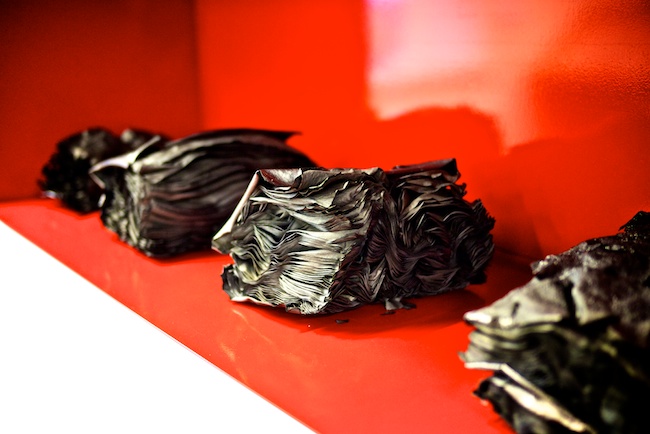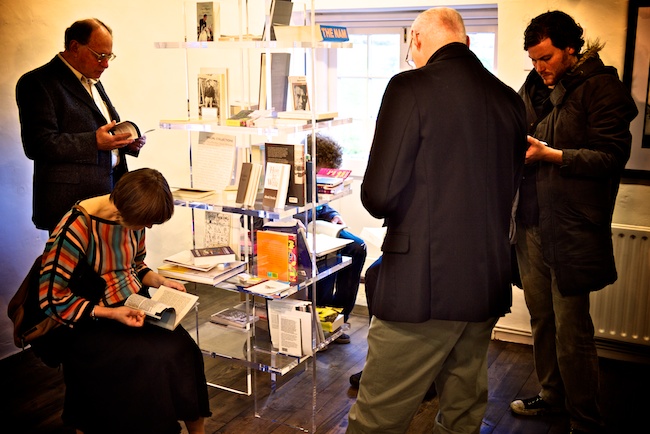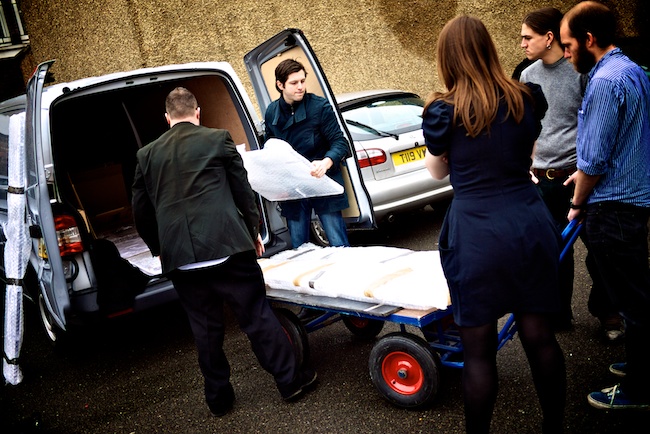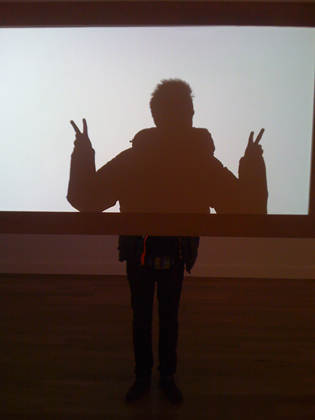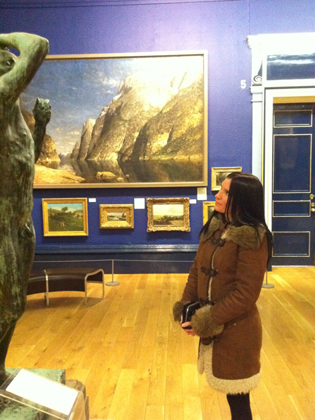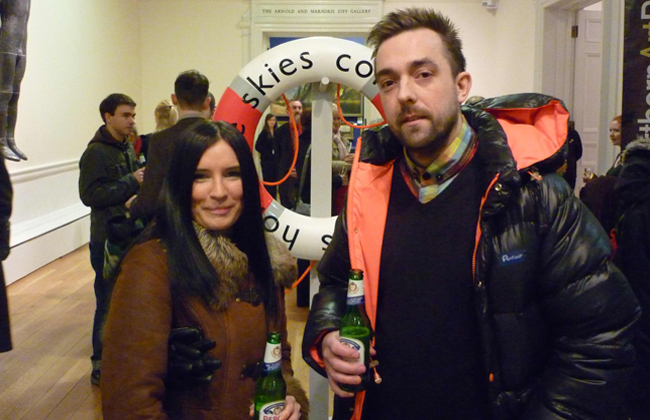Jaume Plensa @ Yorkshire Sculpture Park
 Wednesday, April 13, 2011 at 2:20PM
Wednesday, April 13, 2011 at 2:20PM 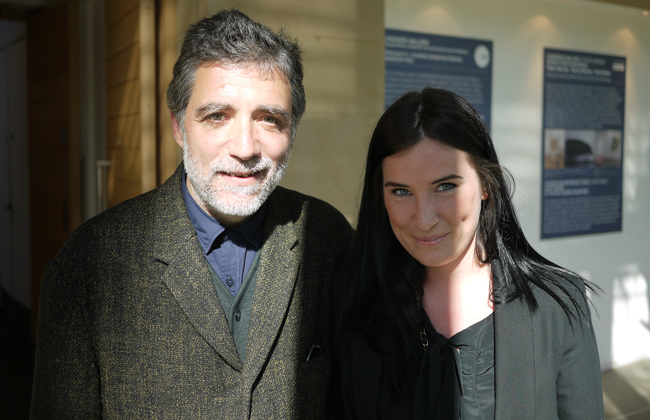
Today I am rolling on to Simon's turf and writing a blog on our visit to the Jaume Plensa exhibition at the Yorkshire Sculpture Park. It’s really my turf too as Plensa hails from my second home, Spain. During my studies I created many projects and a dissertation on Spanish art/artists and the very famous sculptor Antoní Gaudí so I feel like this is something of interest to me too.
Last Friday I had the unique opportunity to attend the private viewing of Plensa’s exhibition at the Yorkshire Sculpture Park and see Plensa in the flesh. Firstly, I must say that my view on art has always been quite simple. For me, art is good for one of two reasons: either because it is technically exceptional or, and most importantly, it moves me in some way; the expression of the artist has managed to work its way through me and touch my emotions. My view has never changed no matter how many books I have read on the analysis of art.
I can say that Plensa and his work tick both those boxes and seeing his work at YSP has reaffirmed that sculpture really stands out and is one of my favourite forms of art. Seeing the photographs of Plensa’s work beforehand was nothing by comparison to being surrounded by his work. I was in awe of everything I saw and I shamefully admit, even though I have visited so many art museums and parks in Spain, this is actually the first time I have had the pleasure of visiting YSP. I cannot put my finger on what exactly made me feel the same calm I feel while walking around Park Guell (created by Gaudí in Barcelona), but it was so nice to feel it again; that inspiration and contentment that comes from the mixture of nature and art together.
''Plensa often refers to his belief that our life experiences leave indelible yet invisible marks on us which can be read by those who know us best. This belief is expressed in a family of figurative works with text tattooed across their skin. Even when the face or the body seem closed and focused on internal thoughts, the words on these figures give us access to what is happening within the body.'' YSP
When Simon and I arrived, I spotted Plensa straight away and I was very excited he was at the event. After looking around the exhibition I saw him talking to his friends and associates in Spanish and I took the opportunity to eaves drop. As I closed my eyes I could imagine myself back in Spain, being around my creative friends, talking music, art and philosophy. People were congratulating him and I almost felt like a kid again. I wanted to say "hello" to him but I was a little scared. As I have a slight obsession with the great late Catalan artist Gaudí (as well as having love for Dalí, Miro and poet Garcia Lorca), and I never had the chance to meet him, I knew I needed to step up, congratulate Jaume and get a photo with him or regret it forever. Forget your 'celebrities', these are the kind of people I want to have the pleasure of talking to! After passing him a few times as I wandered around the exhibition I finally asked him, nicely, in Spanish to have a photo with me. He was so gracious and kind, and after our snapshot I congratulated him on the exhibition and ran off all happy and kind of in love ;). Yes I am a geek and yes I don’t care :-) At this point I think Simon had bailed on me and told his art friends he didn’t know who I was (although he did stay around long enough to take the picture.)
The exhibition itself was inspiring. Everything about Plensa's work is people orientated, whether it be the actual physical statues or simply the words of different people used in his work. The use of poetry mixed with art was so interesting and I spent almost 15 minutes reading along the Twenty-Nine Palms lettered curtains, bumping into people along the way. I read the Spanish, Catalan and English language and I only read a small part of the full length of the curtains. These were taken from some of Plensas favourite poets. The trees with bronze versions of Jaume's body hugging them created a peaceful feeling and yet again, I circled them all to read of the names [of famous musicians] printed on them. Having not read a lot on Plensa beforehand I felt like his personality was coming across to me through his work; the effect poetry and words have had on his life. This is important to me as I find the biography of an artist just as interesting as the work itself.
I felt so many different emotions while entering each exhibition room. At first I was happy and calm walking outside and seeing the various figures, made from letters and symbols, shining in the sun. When I entered the rooms with the lit up figures I felt the panic, the stress and the anxiety that the figures did. The most bizarre feeling I felt was when I entered the room with the elongated stone heads. I felt like I was in a stretched photo and my eyes just would not adjust, the whole effect of the room was quite trippy. Some of the heads were carved and finished, others seemed half done. It felt as if they were once big ancient statues that had fallen down and these were the remains.
In Jerusalem AKA 'the gong room' it was nice to see so many people interacting with the art. Even the gongs were inscribed with words, which were from the Songs Of Solomon. I love anything biblical so after attempting to successfully 'gong' a gong (to no avail!) I walked around and had a read of each text and then had a look at the rest of the exhibition. It included quotes from Plensa himself, a piece of art which seemed like a hanging mobile made from metal and filled with poetry and a room full of models of all his work. All in all an amazing experience and I already have my books on Plensa and his work on order! Congratulations Jaume Plensa and we hope, once again, you will enjoy your time here in Yorkshire.
Photo Tour
 When we arrived the sun was shining and the atmosphere was lovely at YSP
When we arrived the sun was shining and the atmosphere was lovely at YSP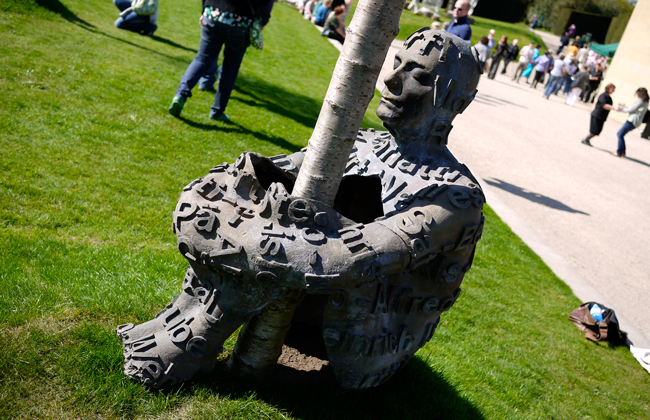 The Heart Of Trees: A bronze cast of Jaume himself, surrounding the trees
The Heart Of Trees: A bronze cast of Jaume himself, surrounding the trees  The figures covered in the names of famous musicians
The figures covered in the names of famous musicians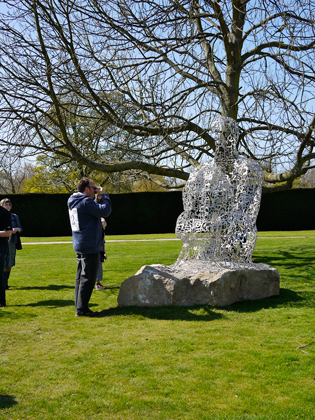 A photographer capturing the letters on the statues
A photographer capturing the letters on the statues Inside the House Of Knowledge
Inside the House Of Knowledge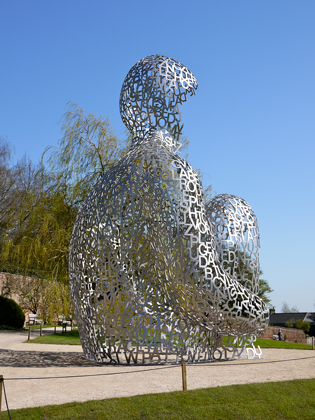 The House Of Knowledge
The House Of Knowledge The figures are made from 8 different alphabets and overflow
The figures are made from 8 different alphabets and overflow  The Hearts Of Trees, the large wired heads above the gallery and Plensa's other works in the distance
The Hearts Of Trees, the large wired heads above the gallery and Plensa's other works in the distance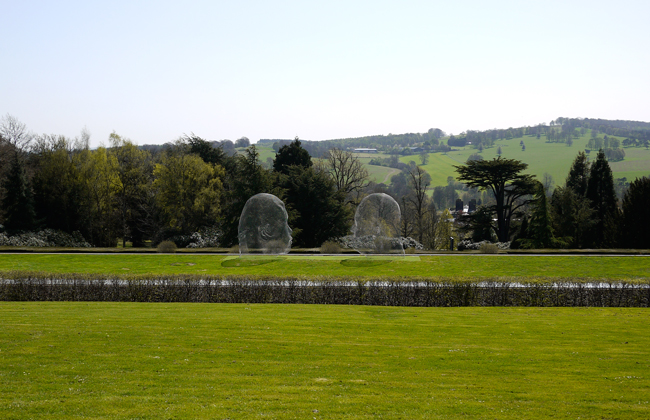 The view of the heads from above
The view of the heads from above Twenty-Nine Palms, curtains made from poems in many languages
Twenty-Nine Palms, curtains made from poems in many languages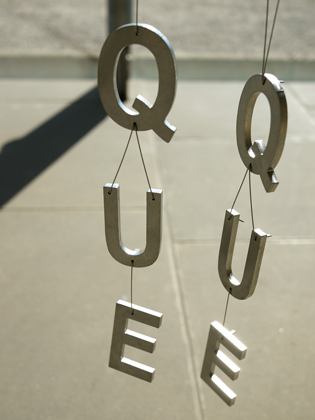 Spanish poetry within the lettered curtains
Spanish poetry within the lettered curtains 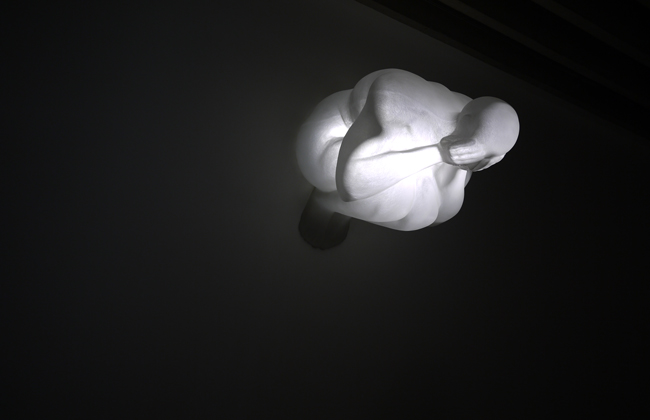 Hear No Evil, See No Evil, Speak No Evil
Hear No Evil, See No Evil, Speak No Evil 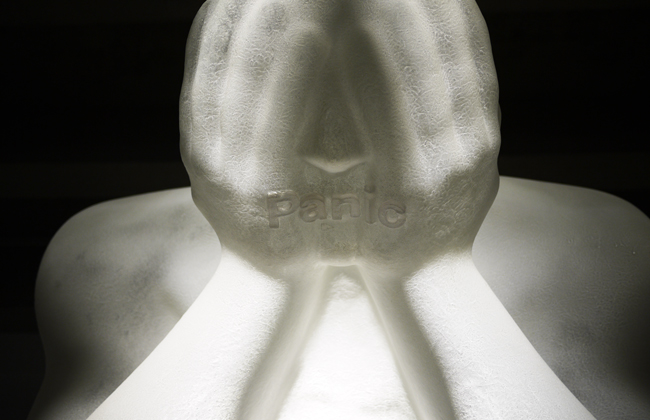 Panic
Panic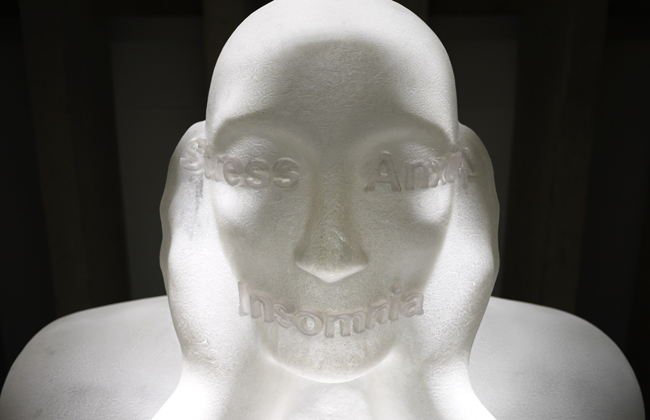 Stress
Stress Hysteria
Hysteria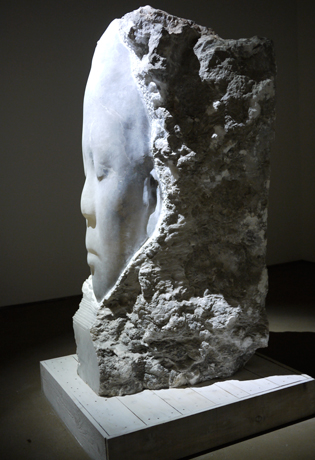 These alabaster heads are like an optical illusion; as if the room has been stretched
These alabaster heads are like an optical illusion; as if the room has been stretched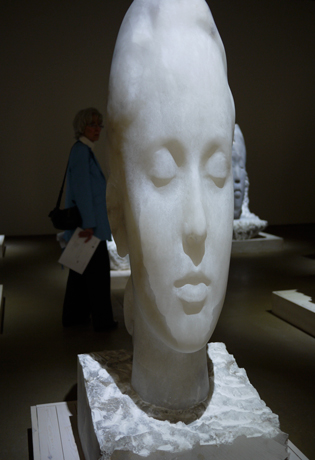 Some of the heads are finished, some are not, adding to the confusion
Some of the heads are finished, some are not, adding to the confusion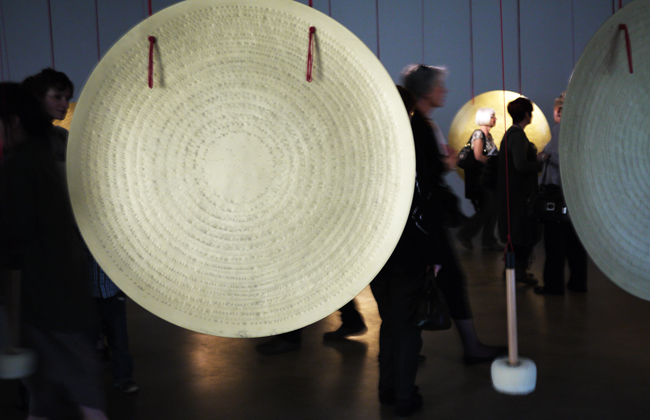 Jerusalem; The gong room
Jerusalem; The gong room 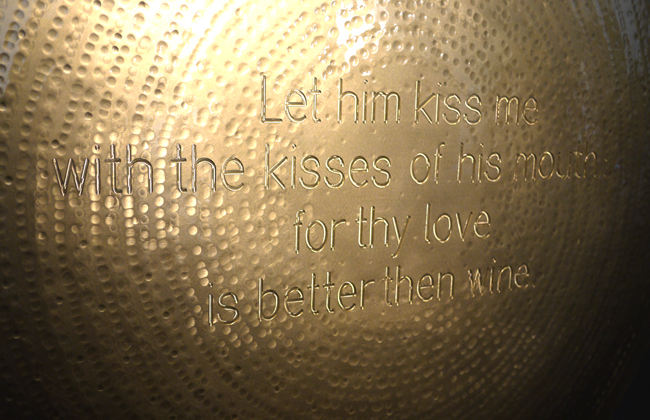 All the gongs engraved with words from the Songs of Solomon
All the gongs engraved with words from the Songs of Solomon Word of Spanish Poet Jose Sorente on a piece shaped like a kids play mobile
Word of Spanish Poet Jose Sorente on a piece shaped like a kids play mobile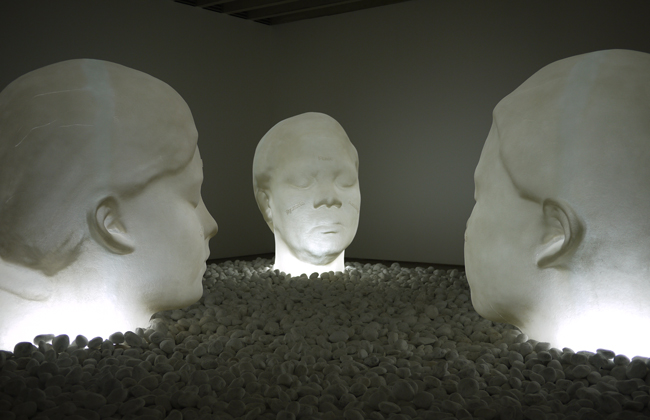 In The Midst Of Dreams: a tribute to Oscar Wilde
In The Midst Of Dreams: a tribute to Oscar Wilde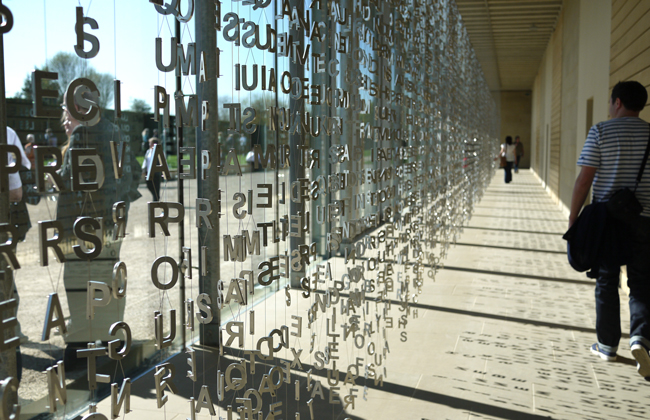 And finishing off with one more photo of the amazing curtains
And finishing off with one more photo of the amazing curtains




